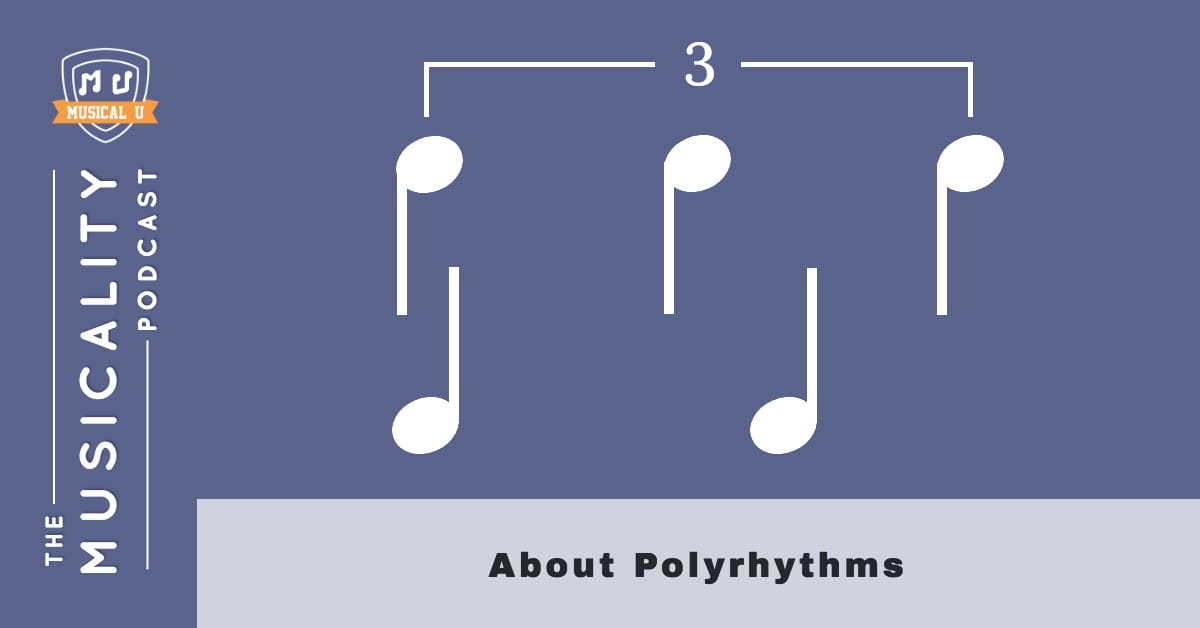Of all the learning-related clichés you likely learned in elementary school, you probably remember the one about the importance of taking initiative.
Though we hate to be your third-grade English teacher, there is a lot of truth in this – whether you’re practicing music on your own, learning with a teacher, or a combination of the two, one of the most important things you can do to guarantee a happy and successful musical journey is to take control of it – whether by seeking out opportunities for yourself, intervening if you feel that your learning is getting off-course, or learning new things on your own without waiting for a prompt.
Initiative is especially important if you are learning on your own, or if you’re growing a music career. This week, we interview a musician who has mastered the art of finding opportunity, give you guidance on seeking out the perfect online music teacher for you, and give you some learning ideas to sink your teeth into, in the form of an introduction to polyrhythms, and a new Resource Pack for understanding major and minor.
One more thing: at the end of this month, we’re also offering a treat for the self-taught musician – especially those for whom singing is uncharted territory…
June’s Masterclass

This month’s Masterclass will be led by Davin Youngs of the Chicago Singing Circle. On Saturday, June 30th, Davin will give an hour-long live lesson on the topic of sounding good as a singer.
If you’ve ever been afraid to sing in front of people, or think singing is irrelevant to your instrument playing, or are reluctant to record your singing voice – you won’t want to miss this!
Register here, and we’ll see you at the end of the month!
Major and Minor
Though equating major with happiness and minor with melancholia might be the most straightforward categorization, the truth about major and minor is more complex than that.
 This month, we add to our Instrument Packs with the introduction of a Resource Pack to help you recognize, play, and contextualize major and minor keys, scales, chords, and intervals.
This month, we add to our Instrument Packs with the introduction of a Resource Pack to help you recognize, play, and contextualize major and minor keys, scales, chords, and intervals.
Head over to Major and Minor: Resource Pack Preview to learn how our Resident Pros in guitar, bass, and piano approach teaching major vs. minor, with both general and instrument-specific tips to get the right notes under your fingers.
Learning the fretboard patterns is a way that many guitar players approach their scales, and for good reason. But what if there was another way? Explore the LP6 Guitar Scales System approach developed by an engineer.
It’s always a pleasure to hear Resident Pro Sara Campbell’s approach to teaching piano. There are many musicians that take some time off from the piano, and then consider returning to the instrument. If this is you, take a listen to this fascinating conversation with Virginia Lloyd, an accomplished pianist that returned to the instrument after a hiatus, and has an inspiring message to all musicians.
Bassists and guitarists frequently approach their scales and chords by learning them vertically up and down the neck. Resident Bass Pro Steve Lawson teaches bassists to also pay attention to triads and learn to move horizontally as well. Explore horizontal chords further with Blitz Guitar’s lesson.
Musical Opportunity
While it’s possible that an opportunity may simply fall into your lap, most musicians that have enjoyed success will tell you the importance of seeking out your own opportunities if you want to grow your musicality and your career.
 From a coveted artist residency, to being part of the vibrant San Francisco music scene, to finding an audio engineer, to the successful completion of her incredible first album, singer-songwriter Kendra McKinley is the perfect example of a musician who both seeks out opportunities and says “yes” to the ones she’s offered.
From a coveted artist residency, to being part of the vibrant San Francisco music scene, to finding an audio engineer, to the successful completion of her incredible first album, singer-songwriter Kendra McKinley is the perfect example of a musician who both seeks out opportunities and says “yes” to the ones she’s offered.
In Art and Opportunity, with Kendra McKinley, she shares the epiphany that led her to become a songwriter and musician, the incredible musical experiences that followed, and the process behind the creation of her first album Treat.
In the interview, Kendra discussed that she experienced some natural stage fright that she had to overcome early on in her music journey. This happens to almost all musicians, and there are many ways around this obstacle. One musician, Marti Amado, found her true calling as a music producer as a result of her stage fright! Read more about her exciting journey in her interview with the San Diego Union-Tribune.
There are many things that a musician will learn in music college, not the least of which is how to use the proper musical terms. Knowing how to talk about music will help you along the way to better understand and describe the music you are making. Modern music technology has its own unique terms, as discussed by Music Repo.
We loved hearing about Kendra’s progression as a songwriter, and how she has embraced the multiple influences and musical tastes that she has. This has helped to develop her wonderful sound and has made her an incredibly versatile songwriter. Joey Sturgis gives some valuable insights on continuing in your trajectory as a songwriter.
Online Music Lessons
In-person lessons may not work for certain people for a variety of reasons related to location, scheduling, and personal reasons.
 Enter: online music lessons, made possible by communication software like Skype and FaceTime.
Enter: online music lessons, made possible by communication software like Skype and FaceTime.
Are you considering online music lessons, and want to know how to go about finding your teacher and setting up your at-home classroom? In Finding an Online Music Teacher, TakeLessons.com covers everything from the types of lessons available online, to the criteria that will help you find a good match in a teacher, to the technical aspects of learning online.
As technology has progressed and we are becoming more connected, the world of online music education continues to become more robust and exciting. Virtually anyone can take a lesson online, and the possibilities will continue to expand. Jessica at The Domestic Musician discusses the benefits of online music lessons for homeschoolers.
With so many options to choose from, what type of lessons do you want to receive, and how should you go about finding an online instructor? Lux Lessons addresses these very important questions.
Musicians are almost superhuman in their ability to process sounds and information as they perform. On the aptly named podcast “Becoming a Superhuman”, we hear about how one music teacher is breaking new barriers in using neuroplasticity to help students develop their musical brains – meet Josh Turknett and his Brainjo method.
Polyrhythms
Though the word “polyrhythm” may be unfamiliar to you, you’ve almost certainly heard one before.
These layered, complex, rolling rhythms occur when multiple rhythms are played simultaneously. They form the backbone of traditional African music, and can be heard in many styles descended from the genre – jazz, blues, and folk, to name just a few.
 Because they add an element of rhythmic interest to whatever song you insert them into, being able to count, recognize, and play polyrhythms is an excellent skill for anyone wanting to explore rhythm outside the confines of 4/4 time. Tune into our podcast episode, About Polyrhythms, for a primer on this fascinating topic.
Because they add an element of rhythmic interest to whatever song you insert them into, being able to count, recognize, and play polyrhythms is an excellent skill for anyone wanting to explore rhythm outside the confines of 4/4 time. Tune into our podcast episode, About Polyrhythms, for a primer on this fascinating topic.
After hearing this episode, you’re ready to dive deeper into the fascinating world of polyrhythms. Before doing so, take a moment to learn the best practices for counting polyrhythms, and make your music learning even more productive and enjoyable. EosAudio explains more.
If only there were some shortcuts, or easy ways to quickly get some of these concepts under your fingers. Josh Wright gives a sneak preview at his method to master 3 against 4 rhythms in only 5 minutes.
Now that you can count out polyrhythms and have mastered 3 against 4, it’s time to really expand your understanding. Tim Teissen introduces us to his method for playing “anything over anything”.
Steering your own Musical Ship
As Kendra McKinley proves, the ability to seek out opportunities and take initiative in your musical journey will take you far. If you are an aspiring recording artist, there are countless takeaways from her incredible interview.
For those that have a different goal in mind, whether it be writing songs for others, mastering your instrument, or learning to sing, initiative is just as important. Seeking out opportunities for learning new techniques and skills will help you discover new ways to grow your musicality and broaden your creative horizons.
Whether you’re self-taught or have a teacher, and whether that teacher is online or in-person – as Sharon Mark-Teggart discussed in an episode of our Musicality Podcast, a curious mind will take you far.
The post Major and Minor, Musical Opportunity, Online Music Lessons, and Polyrhythms appeared first on Musical U.




